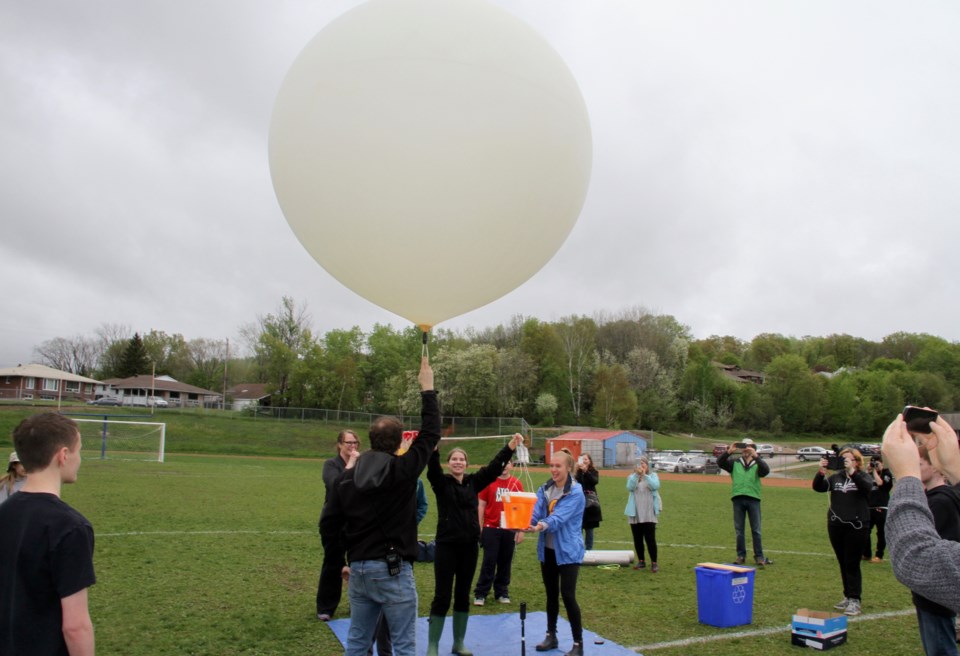Students and teachers gathered on the football field at Widdifield Senior Secondary school to watch a successful launch of their high altitude weather balloon.
The students and teachers joined an international trend inspired by Global Space Challenge by launching a balloon equipped with a technology-toting bait bucket which will ascend to the Earth’s outer stratosphere.
Kelly Shulman is a Computer Science teacher at the local high school and one of the organizers of Widdifield Secondary School’s Near Space Program.
“A lot of the data that we are getting today is image data so right now that balloon is transmitting live images to us that we can de-code and upload for people to see. So we should be able to see it while it's in space and we should be able to get a picture back from that and we are also getting GPS location, altitude data and speed,” said Shulman, noting that they had to contact NAV Canada about the launch as the balloon and bucket will show up on radar.
The launch took place around 10 a.m. and the balloon is expected to be in the air for close to three hours before its projected to land in the Astorville area.
“We hope it comes down and we hope not in water, we’d really like it to land in a shallow ditch right next to the road, that’s what we would really prefer,” she said.
After the launch the next part of the mission is to retrieve the payload.
“So our job is now to get all this stuff packed up, get ourselves into cars and then we have to look at where it’s going from our beaconing and then we have to decide whether we are going down Highway 11 or 17,” she said.
The launch was a hit with some of the students who have been working on the Near Space Program for a couple of months.
“We’ve been waiting for this day for so long and we’ve had things ready and we’ve been waiting for this day to come,” said Rose Goldfarb a grade 11 student at Widdifield.
“It was really cool seeing it actually come together and go up.”
Shulman believes the program is a great learning opportunity for students.
“This is a really multi-faceted, multi-subject area project, unlike if we are just doing programming so it really brought together not only the hands-on skills but science, weather, GPS locations, radio technology, so many things came into this that it is really more than a computer course,” she said.
“The computer part of it is quite small.”
Shulman expects the balloon to burst about two hours into the flight and then it will take about 45 minutes to an hour for the bucket to descend by parachute.
Once it's retrieved the students will work together to gather the information and create a video to share with the school and the public.
“So after they retrieve the payload with the images then we have some video editing to do so I don’t know if this will end up being on YouTube or definitely video on our website and images,” said Shulman about the video component which is inspired by the international movement Global Space Balloon Challenge.
“However, we really are hoping to expand this next year. This is really our pilot year and a learning year for us to see if we can get this to happen.”
